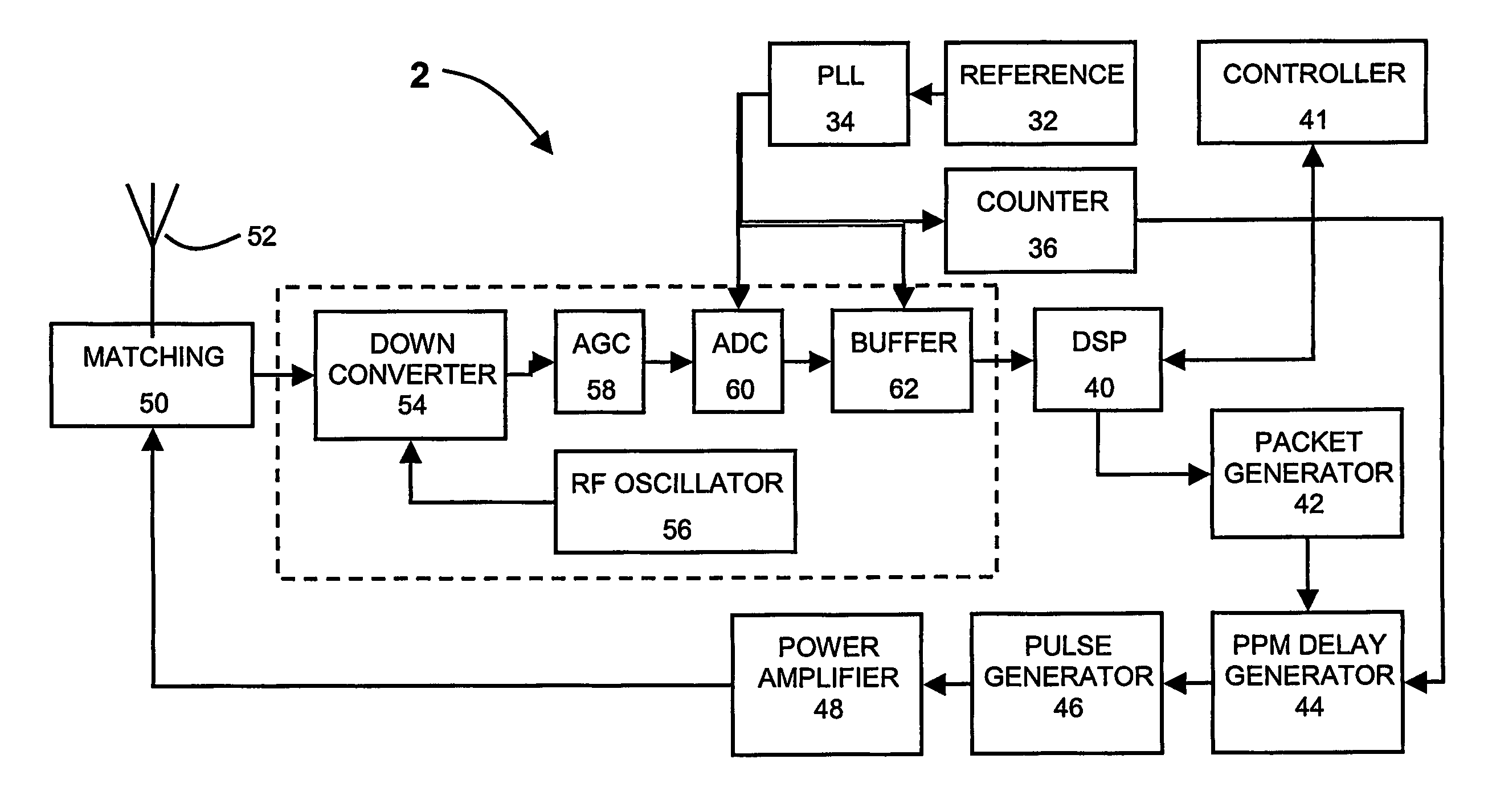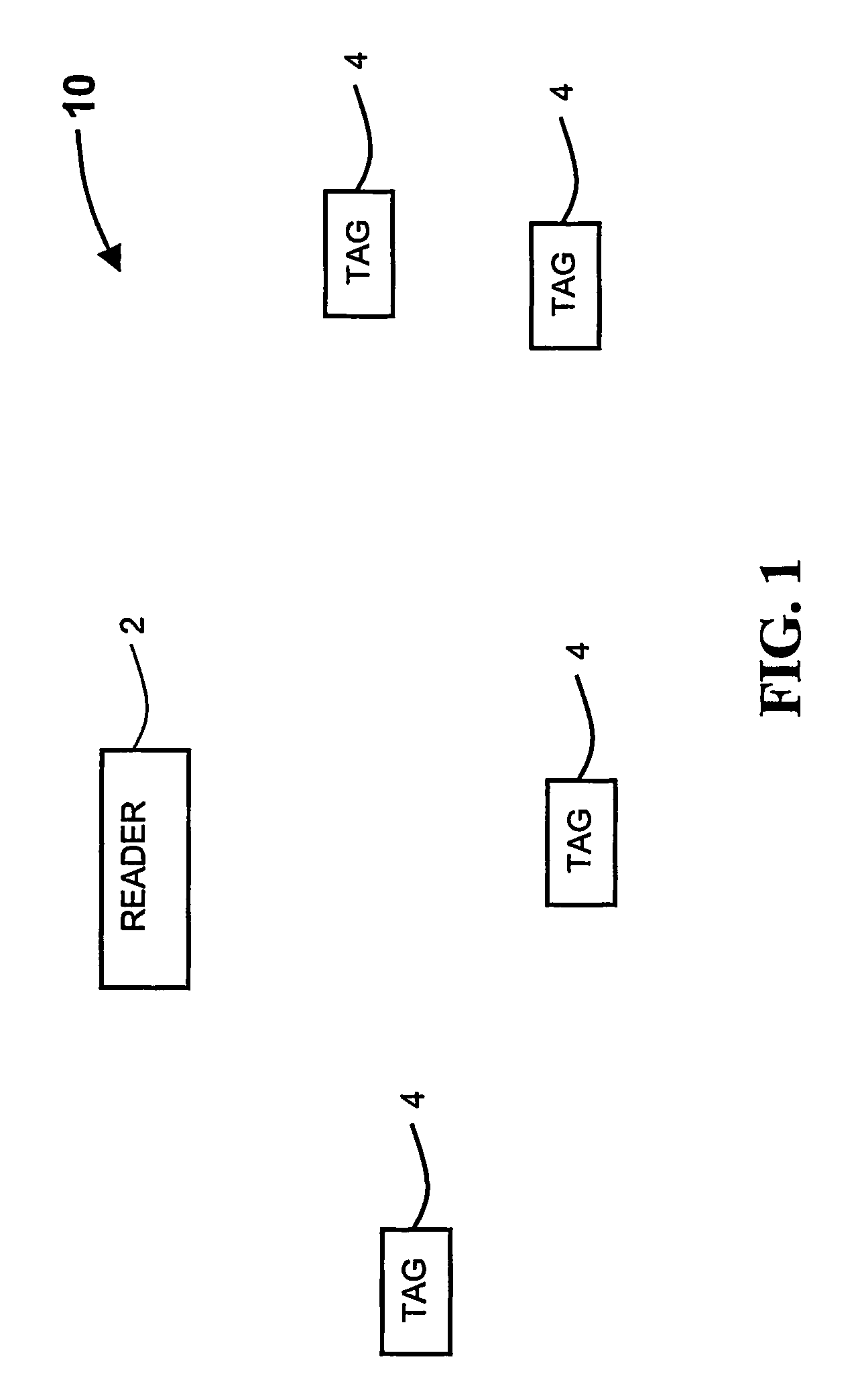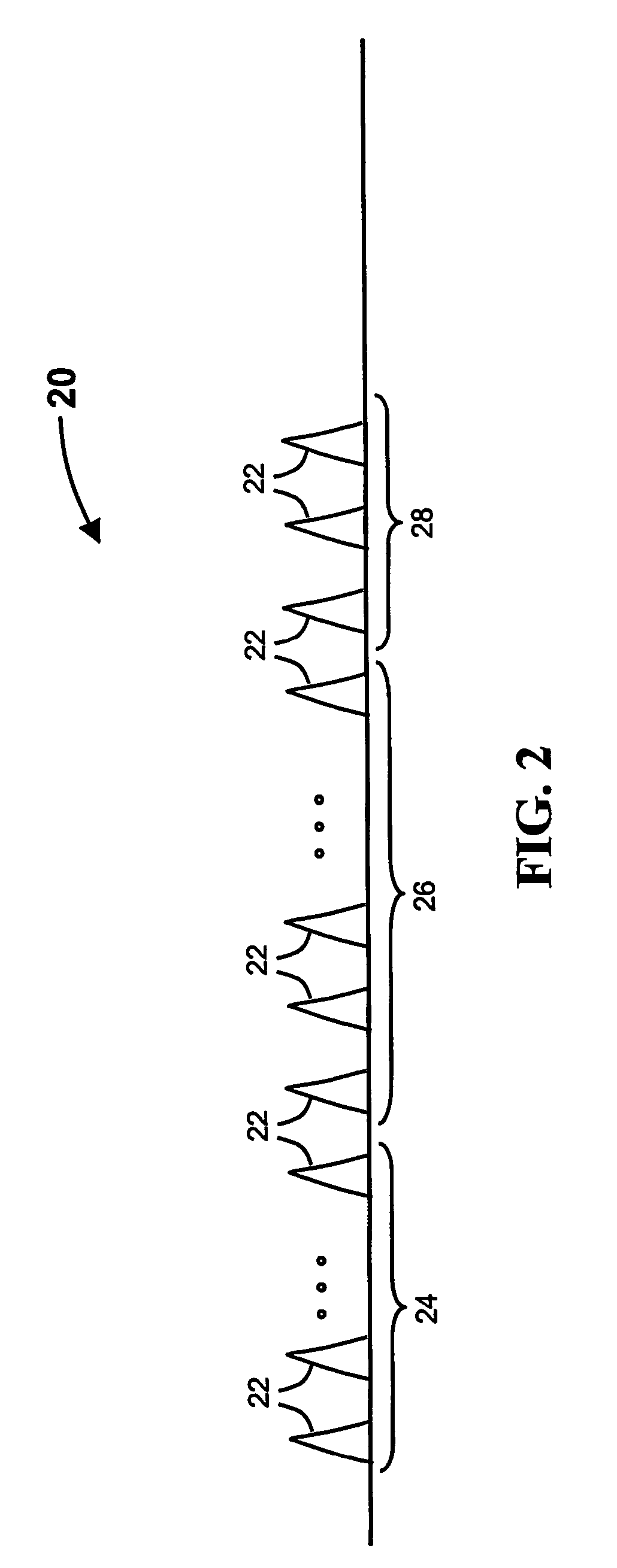Method and system for distance determination of RF tags
a distance determination and tag technology, applied in the field of distance determination of rf tags, can solve the problems of increasing the required time, unauthorized individuals may be opened, and all the collision overcoming methods are time-consuming, so as to achieve convenient implementation, improve accuracy, and reduce time-consuming
- Summary
- Abstract
- Description
- Claims
- Application Information
AI Technical Summary
Benefits of technology
Problems solved by technology
Method used
Image
Examples
Embodiment Construction
[0035]The present invention relates to distance determination of RF tags, used in RF identification systems, and more particularly, to a method and system for distance determination of RF tags and its applications, based on measuring the round trip delay by using one or more channels.
[0036]Hereinafter, the term ‘channel’ refers to an allocation of resources providing a link between a transmitter and a receiver. Exemplary channels are frequency band, time slot, space direction and spreading code.
[0037]Hereinafter, the term ‘wide band signals’ or the equivalent term ‘spread spectrum signals’ refers to any spread spectrum signals types such as: direct sequence (DS), frequency-hopping (FH), multi-carrier CDMA, chirp signals, short or long pulses of any shape with or without time hopping.
[0038]Hereinafter, the term “reader cell” refers to a predetermined bounded volume, such as the volume bounded within a specified radius or between two radii. The accuracy of the bounds of the bounded vo...
PUM
 Login to View More
Login to View More Abstract
Description
Claims
Application Information
 Login to View More
Login to View More - R&D
- Intellectual Property
- Life Sciences
- Materials
- Tech Scout
- Unparalleled Data Quality
- Higher Quality Content
- 60% Fewer Hallucinations
Browse by: Latest US Patents, China's latest patents, Technical Efficacy Thesaurus, Application Domain, Technology Topic, Popular Technical Reports.
© 2025 PatSnap. All rights reserved.Legal|Privacy policy|Modern Slavery Act Transparency Statement|Sitemap|About US| Contact US: help@patsnap.com



